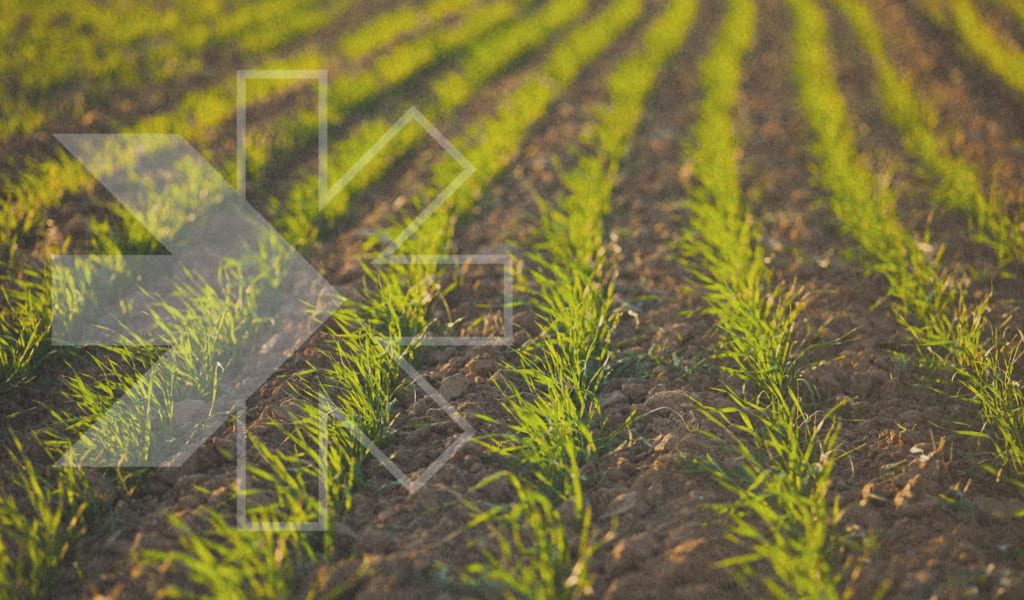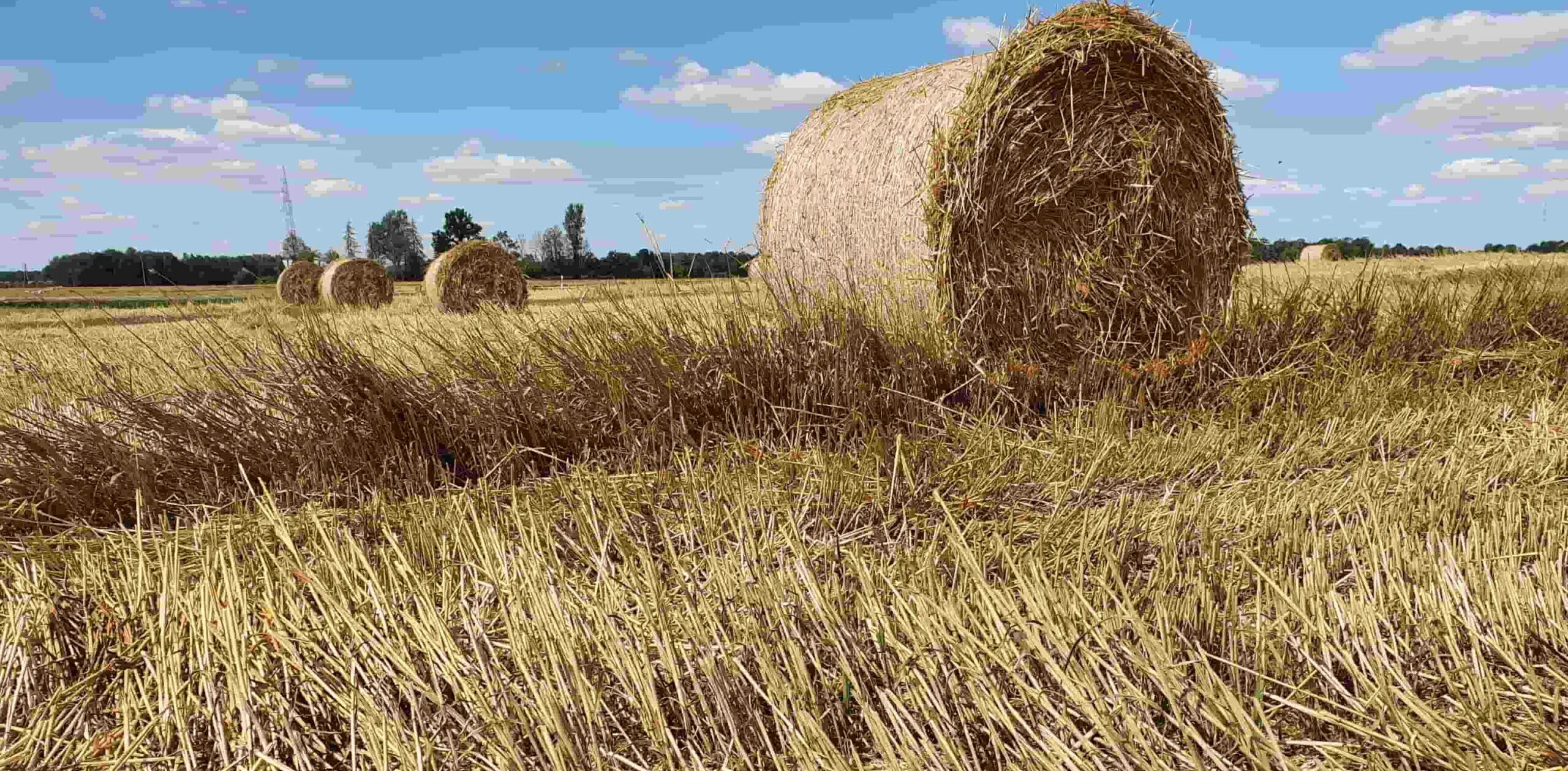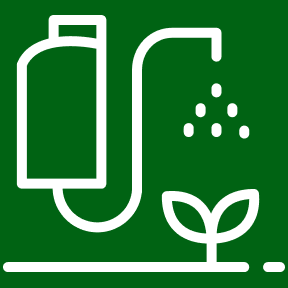As mentioned in our previous article abiotic stress can arise from various sources, both natural and human-induced with the common trait being that no living organism is directly involved in producing the stress. Today we look a little deeper into the main types of abiotic stress that affect crop production.
Weather-related stress
Temperature Stress
Extreme temperatures, both hot and cold, can severely affect plant growth and development. Thermal Stresses especially unusually prolonged high temperatures are an increasingly common phenomenon that are affecting crops on a global, and now almost annual, basis.
Heat Stress can lead to increased water requirement through higher transpiration, reduced photosynthetic rates, protein denaturation that disrupts crop metabolism, oxidative damage releasing so called Reactive Oxygen Species (ROS), or free radicals, that cause damage at a cellular level within the crop, among many other negative effects.
The damage caused by Heat Stress can be hard to see, here in Image A (L) there is a strong fluorescent glow in the plants cells that have suffered heat stress indicating high cell damage, while in Image B (R) the same crop, under same heat conditions, but previously treated with a Rovensa Next biostimulant shows very little fluorescence indicating a vast reduction in the cell damage that results from Abiotic Stress related heat damage © Rovensa Next
On the other hand, Cold Stress, particularly out of cycle cold stress, can cause cellular dehydration and death, membrane damage, and inhibit enzymatic reactions. For example, Cold Stress is a particularly damaging Abiotic Stress during flowering and can lead to large production losses.

Water Stress
Water Stress, either due to drought or excessive rainfall, poses a significant challenge for crops that can easily result in lost yield or even total crop failure.
Drought Stress leads to a water deficit inside the plant which has multiple negative consequences, reduced cell turgor (drooping leaves / stems), impaired nutrient uptake – both because of poor crop metabolic processes, as well as reduced nutrient availability in the soil solution, metabolic imbalances and even cell or crop death. The increased prevalence of Drought Stress is leading to a global increase in the installation of crop irrigation equipment, the use of agronomic products to increase root biomass to enable increased water uptake by the crop such as Humic Acids, and more novel product concepts such as products to increase the infiltration and retention of water in the soil profile.
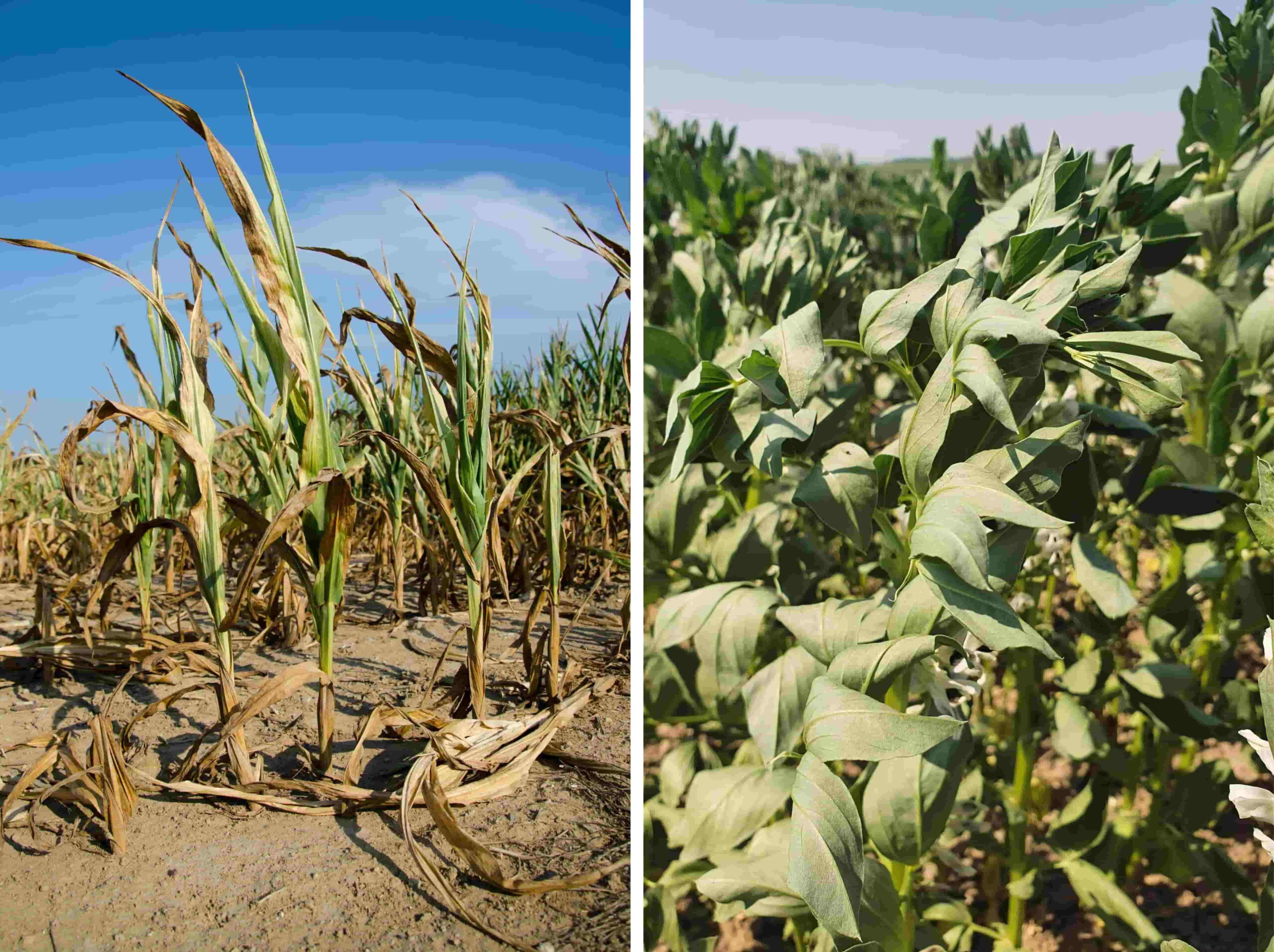
Conversely, Flood Stress restricts oxygen availability to plant roots, causing root asphyxiation or “hypoxia” resulting in metabolic disruptions. Nutrient imbalances are also increased under Flood Stress conditions due to leaching of essential nutrients, or accumulation of undesirable nutrients in the soil solution such as excess Sodium. At the same time under Flood Stress the crop is also less able to resist and “grow out” of these floods related Abiotic Stresses due to disrupted photosynthesis which results in less energy available for growth.

Light Stress / UV / Solar Radiation Stress
Hand in hand with increasing Temperature Stress, stress induced by excess or insufficient light is also increasing and is a particular problem in high yield agriculture.
These High Light Stress / UV / Solar Radiation Stresses paradoxically include reduced photosynthesis (and thus reduced energy and sugar production) due to damage of the photosynthetic structures in the leaf. It should be noted that this damage is often difficult to detect with the naked eye and can go unnoticed but has a dramatic effect in reducing the production of energy and sugars, that ultimately reduces yield and quality. Sunburn of the stem and fruit skins may occur in high UV Stress situations, while at the same time there is increased generation of damaging ROS molecules that cause local and / or systemic cell damage.

As can be expected Insufficient Light Stress also reduces photosynthesis but this is due to lack of energy input rather than damage to the photosynthetic structures. At the same time other less visible related processes related to Insufficient Light Stress also have a negative impact on crop performance such as increased nutrient imbalances due to an imbalance between nutrient uptake and internal use. These various Insufficient Light Stresses retarded crop development, and delay maturity, are very visible examples of the effect of this type of stress.
Agronomic management-related stress
Salinity & Sodicity Stress
It is possible to have too much of a good thing, and excess Calcium, Magnesium or Potassium can contribute to increased Soil Salinity Stress. Accumulation of excess Calcium and Magnesium in the soil is increasingly common due to the increasing use of irrigation – as all irrigation water contains some degree of dissolved salts. The two usual culprits of Sodium and Chloride are well-known contributors to these Salinity and Sodicity Stresses resulting in reduced crop productivity and quality of harvest. Globally 25 – 35% of global agricultural lands are now affected by Salinity & Sodicity Stresses. Managing these two stresses is one of the most complex agronomic tasks and requires an integrated approach to minimise the strong negative impacts that these two stressors have on yield and profitability.
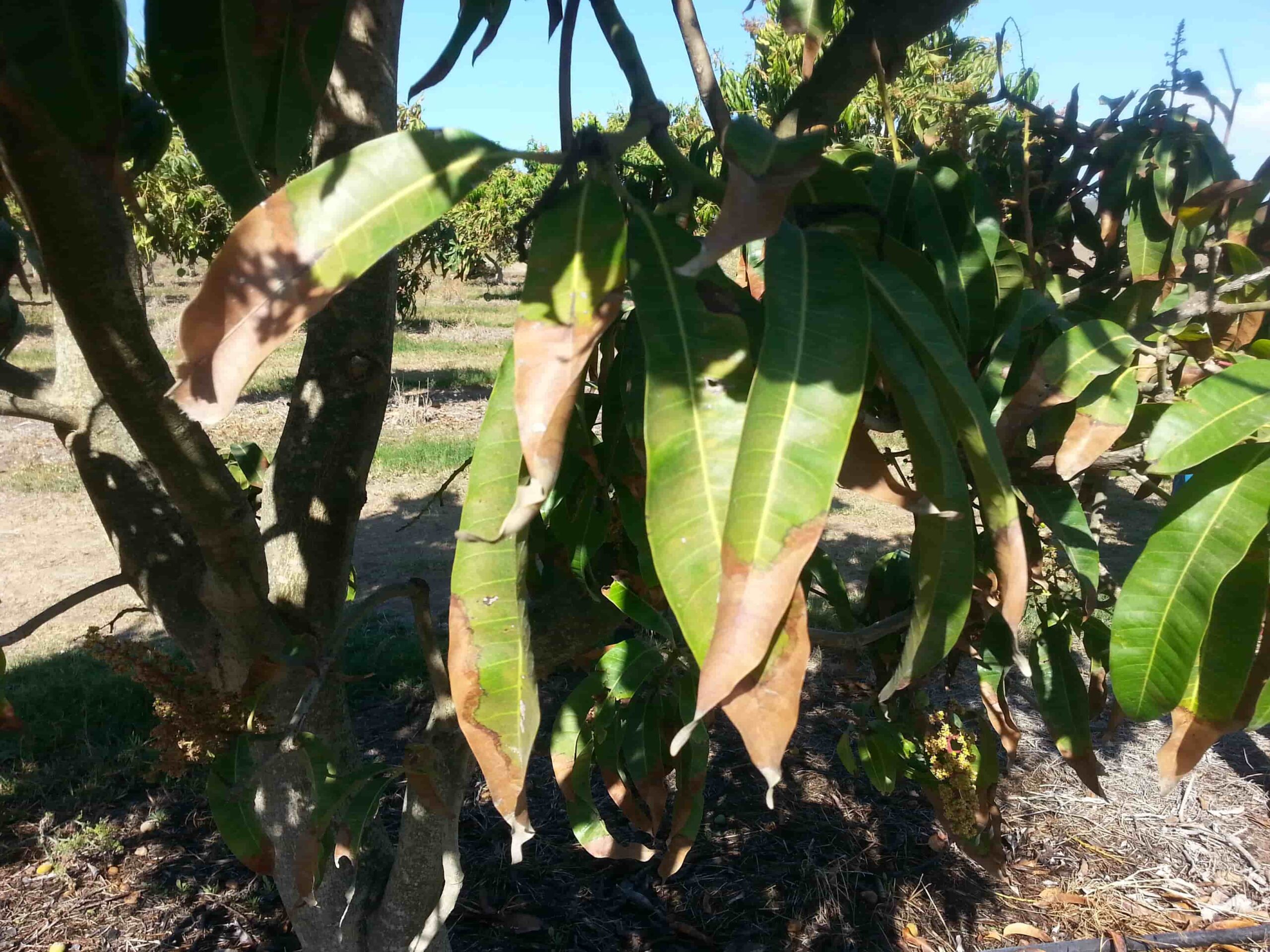
Phytotechnical Stress
More commonly referred to as crop burn, or crop scorch, the most common sources of Phytotechnical Stress are either as a result of climate stress especially severe cold or heat, or as a consequence of an adverse metabolic reaction to an applied agronomic foliar product such as PP’s. Depending on the severity, photosynthesis and chlorophyll synthesis are disrupted, or in severe cases the area affected may even die. Logically any disruption to photosynthesis is going to lower the available energy to the plant for optimum growth and harvest.

Soil Compaction Stress
With the ever-increasing size and weight of agricultural machinery, compaction of soil is an increasing problem that results in restricted root growth, reduced nutrient cycling, reduced water availability and reduced oxygenation of the root zone. Combined with the global loss in soil organic matter, which helps to resist soil compaction, Soil Compaction Stress is often overlooked as an Abiotic Stress, but it is increasing recognised as having a major impact on crop productivity.
Internal Growth-Related Abiotic Stresses
As plants grow, they go through different stages, and these changes can sometimes lead to Abiotic Stress. For example, if one imagines a plant growing from a tiny seed into a big, leafy one with fruit or seeds in just a few short months, they certainly undergo internal changes that can induce Abiotic Stress. For instance, when a plant moves from its early leafy stage to the flowering phase, it faces internal adjustments such as changing physical stresses on stems, stresses due to changes in hormonal balance and stresses resulting from changing nutrient and energy allocation. Just like people may encounter challenges during significant life transitions, plants can also experience difficulties as they shift from one growth phase to another which collectively are referred to as internal growth-related Abiotic Stresses.

How do plants manage Abiotic Stress naturally?
The above are just some of the Abiotic Stresses that are encountered during the crop growth cycle, and in the next article we will begin to outline how plants have evolved to manage the negative effects on productivity, yield and quality of Abiotic Stress.

